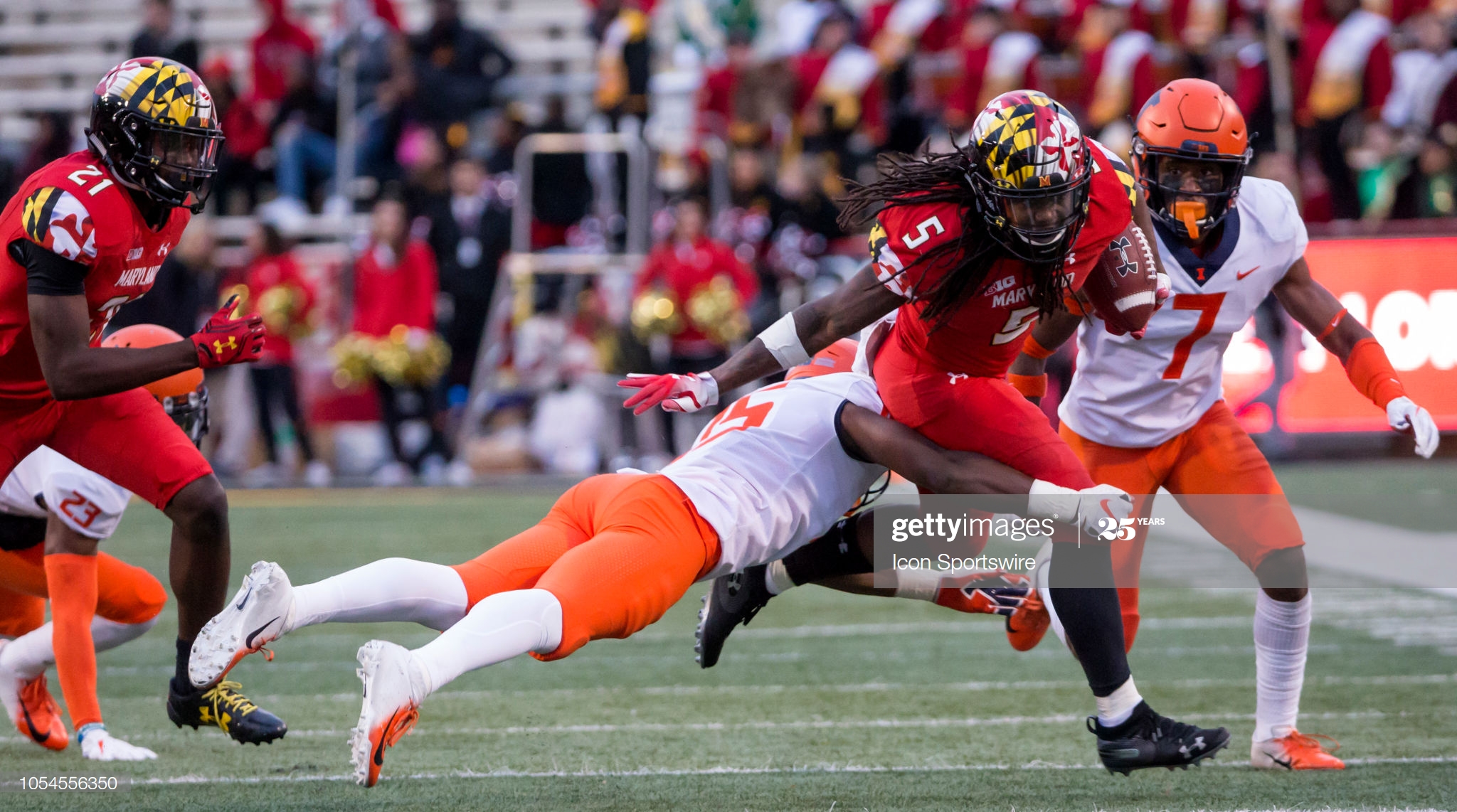Although he only played for two seasons at the college level, the fact that Maryland running back Anthony McFarland only picked up a mere 24 receptions over the course of 23 games could be a bit concerning for those interested in the limits of his versatility for the Pittsburgh Steelers out of the backfield.
As a redshirt freshman, during which he rushed for over 1000 yards on just 131 attempts, McFarland caught only seven passes, though he produced 73 yards out of them. Last season, playing through injury, he caught 17 passes for 126 yards, including a touchdown.
It wouldn’t be accurate to call him a receiving back, just going by his resume. Even Benny Snell had 29 career receptions, including 27 over his final two years. James Conner had 30 receptions, with 21 in his final collegiate season. And Jaylen Samuels, well…he had a whole bunch of them.
McFarland doesn’t see himself as limited, however, and fully expects to present a dynamic skillset when he is given the opportunity at the NFL level. And the Steelers wouldn’t be a bad team to be given that opportunity from. Conner has caught 89 passes over 23 games in the past two years, for example.
“I look at a lot of running backs in the NFL like Alvin Kamara, Christian McCaffery”, the Maryland back told reporters during a teleconference last weekend after he was drafted. “I’m a versatile back. At the end of the day, that’s the type of games I look at. I want to be a versatile back in the NFL. I want to be a running back known for doing it all”.
Considering his career-high in touches for a single season is just 138, averaging 11.5 touches per game, and he’s only had three games during his time there with 20 or more touches, it’s hard to make that sales pitch based on his stats, but his skill set offers more optimism.
The Steelers did not draft him with the idea in mind that he is going to be a future every-down back, but he does have the frame and the tools to be a primary ball-carrier in addition to being a receiving option, and may have the requisite aptitude to adapt to NFL-level pass protection as well.
It’s not uncommon for players to come into the NFL with a limited body of work, only to see their repertoire expand and flourish once they get into a professional program that has the time and incentive to test out a player’s limitations.
Despite his relatively meager output as a receiver in college, the limited tape he does have in the passing game and his work at the Combine, aside from his sheer athletic numbers, do lend credence to his perception of himself as being capable of the sort of versatility of the backs he studies.


